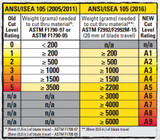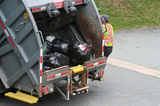Blog
How to Select the Best Kevlar Gloves
Developed by DuPont in 1965, yarns made from Kevlar remain a very popular component in manufacturing protective safety gloves. Kevlar combines light weight with high tensile strength, along with heat and and cut resistance — qualities that make it a great material for PPE, including gloves.Buying the right pair of safety gloves for your workers doesn’t have to be overwhelming, no matter what your requirements are. When purchasing or replacing your gloves, here are six considerations you should k
…
Jan 6th 2021
Understanding the New ANSI/ISEA 105 (2016) Hand and Arm Protection Cut Level Classification
In recent years, rapid technology advancement allowed manufacturers to create more sophisticated yarns that improved glove performance significantly. Cut-resistant gloves and sleeves are designed to protect hands and arms from direct contact with sharp objects made of metal, ceramic, or glass. Cut level protection is ensured by a combination of the material’s composition and thickness. The level of cut protection can be increased by using high-performance materials (Kevlar, Dyneema); com
…
Sep 2nd 2016
Innovative Kevlar Gloves Have Touch Screen Capability
Factory workers, light industry, glass cutting and operations, metal stamping and sheet metal workers run the risk of slices and cuts to their hands. So do extreme snowboarders apparently since DuPont™, who manufactures the space-age Kevlar® yarn, chose to introduce the
MCR 9178NFO gloves last year at the Winter X Games in high-fashion and high-safety orange.
These MCR Safety gloves feature a patent-protected DuPont™ material. So don't go trying to make your own. It's pro
…
Mar 15th 2016
Waste Collection Workers High Risk of Injury
Waste collection has always been a more injury-prone occupation than most. In both fatal and non-fatal accident categories, refuse collectors are at high risk. The US Bureau of Labor Statistics shows many of the fatal accidents being caused by transportation - either passing cars, other work vehicles, or their own refuse trucks. Slips, falls, and trips also occur with regularity, along with cuts and lacerations.
Safety equipment is critical for these workers, and is most often supplied
…
Apr 22nd 2013





